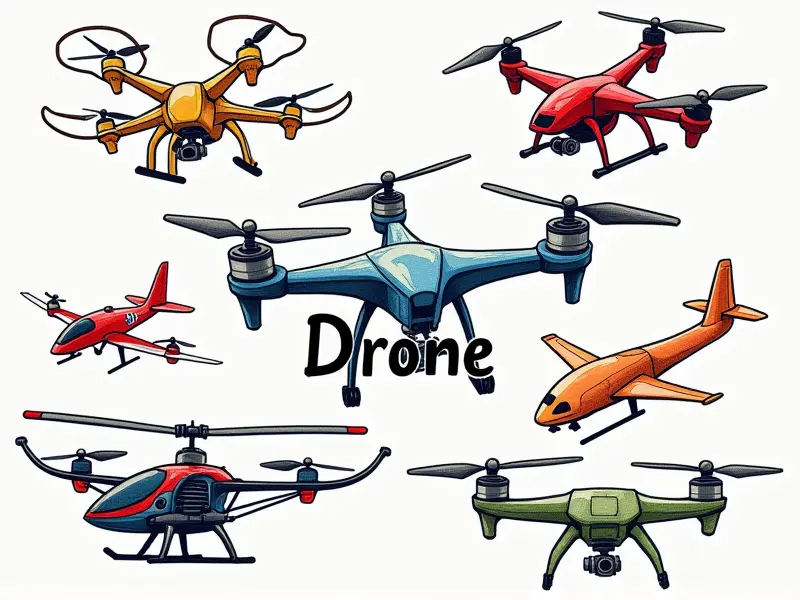How big can RC helicopters get?

The world of remote-controlled (RC) helicopters is vast and diverse, ranging from tiny indoor models to massive machines that rival full-size counterparts. As enthusiasts push the boundaries of what's possible with RC technology, a natural question arises: how big can these miniature marvels truly get? This article delves into the intricacies of scaling up RC helicopters, exploring both the theoretical limits and practical challenges.
Can RC Helicopters Match Full-Size Models?
The quest to build RC helicopters that mirror full-size models is a fascinating endeavor. While it's technically feasible to create scaled-up versions, several factors come into play:
- Mechanical Complexity: Larger RC helis require more intricate mechanical systems and components.
- Payload Capacity: As size increases, so does the need for robust power sources and control mechanisms.
- Aerodynamics: Maintaining flight stability and maneuverability becomes increasingly challenging with larger sizes.
Limits of Size in RC Helicopter Design
The design of RC helicopters is governed by a set of physical constraints. As models grow in size, they must adhere to principles such as:
- Weight-to-Power Ratio: Ensuring that the helicopter can lift its own weight and additional payload.
- Structural Integrity: Maintaining robustness against wind forces and other environmental factors.
- Control Precision: Balancing control inputs to achieve smooth, stable flight.
Scaling Up RC Helicopters: What's Possible?
The potential for scaling up RC helicopters is immense. Innovations in materials science and electronics have paved the way for larger models with improved performance:
- Advanced Materials: Lightweight yet strong composites reduce overall weight.
- Battery Technology: High-capacity batteries provide longer flight times and greater power output.
- Sophisticated Electronics: Enhanced control systems offer finer-grained maneuverability.
Mega-Scale RC Helis: Breaking the Size Barrier
The concept of mega-scale RC helicopters challenges conventional limits. These behemoths are not just scaled-up versions but represent a new frontier in model aviation:
- Custom Engineering: Tailored designs to optimize performance and stability.
- Innovative Propulsion: Advanced engines or electric motors for sustained flight.
- Specialized Control Systems: Custom-built controllers for precise operation.
Exploring the Boundaries of Giant RC Choppers
The exploration into giant RC choppers involves a deep dive into aerodynamics and structural engineering. Key considerations include:
- Aerodynamic Design: Streamlined shapes to minimize drag.
- Structural Reinforcement: Ensuring the helicopter can withstand high winds and turbulence.
- Flight Testing: Rigorous testing phases to validate performance and safety.
Building Massive RC Helicopters: Challenges & Triumphs
The process of building massive RC helicopters is fraught with challenges but also offers rewarding triumphs. Key aspects include:
- Material Selection: Choosing the right materials for strength and weight.
- Assembly Techniques: Precision assembly to ensure structural integrity.
- Trial & Error: Iterative testing and refinement of designs.
Maximum Size for Maneuverable RC Helis
The quest for the largest maneuverable RC helicopter involves balancing size with agility. Key factors include:
- Flight Dynamics: Ensuring that larger models can still perform acrobatic maneuvers.
- Control Sensitivity: Fine-tuning control inputs to achieve precise flight patterns.
- Weight Distribution: Proper balance for optimal performance and stability.
The Largest RC Helicopter Build Guide
A comprehensive guide to building the largest RC helicopter includes:
- Design Planning: Detailed blueprints and schematics.
- Component Sourcing: Procuring high-quality parts and materials.
- Assembly Instructions: Step-by-step assembly process with troubleshooting tips.
RC Helicopter Giants: Pushing Size Limits
The push to create RC helicopter giants involves continuous innovation and experimentation. Key areas of focus include:
- Innovative Designs: Novel approaches to aerodynamics and structural integrity.
- Advanced Technologies: Leveraging cutting-edge materials and electronics.
- Safety Protocols: Ensuring safe operation through rigorous testing and certification.
Scaling Up RC Helis: Is Bigger Better?
The question of whether bigger is better in the realm of RC helicopters hinges on several factors:
- Performance Metrics: Evaluating flight characteristics, stability, and maneuverability.
- User Experience: Assessing ease of control and enjoyment for pilots.
- Economic Feasibility: Considering the cost-benefit ratio of larger models.
Exploring the Upper Boundaries of RC Heli Size
The upper boundaries of RC helicopter size are continually being pushed. As enthusiasts and engineers collaborate, new frontiers in model aviation emerge:
- Future Trends: Predicting advancements in materials and technology.
- Community Involvement: Engaging the hobbyist community to drive innovation.
- Sustainability: Emphasizing eco-friendly practices in design and manufacturing.
Conclusion
The quest to build larger RC helicopters is a testament to human ingenuity and passion for aviation. While there are inherent challenges, the potential rewards—both technical and experiential—are immense. As technology continues to advance, the upper limits of RC helicopter size will undoubtedly expand, offering enthusiasts new opportunities to explore the skies in unprecedented ways.

